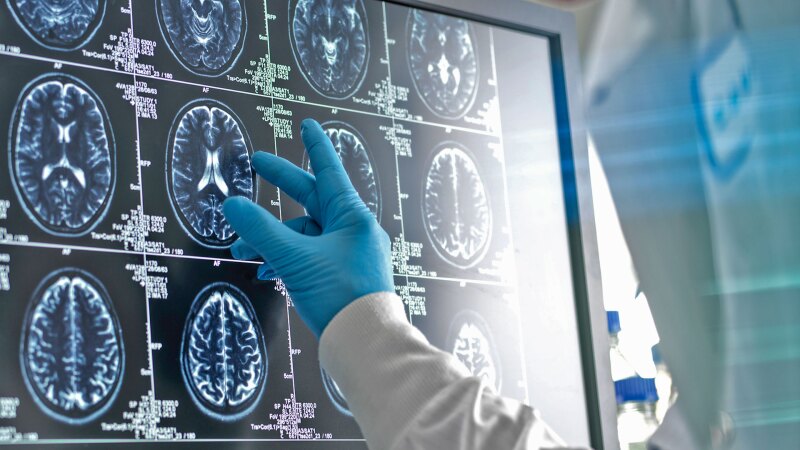About 332 million people around the world suffer from depression, and while they all struggle with persistent feelings of sadness, other symptoms can vary greatly: Some people with depression overeat, whereas others lack an appetite. Some have loud, angry outbursts; others become quiet and withdrawn. Some toss and turn all night; others sleep 10-plus hours a day.
The way depression manifests in an individual may seem quite variable, but scientists theorize there may be brain-based reasons that explain the wide differences in symptoms. What’s more, they’ve been able to pinpoint specific brain circuits associated with a few common variants of depression symptoms—and are starting to use these findings to help create targeted treatments.
That’s crucial, because a sizable portion of people with clinical depression—also known as major depressive disorder (MDD)—aren’t sufficiently helped by currently available therapies. In fact, nearly a third have what’s known as treatment-resistant depression, which means they’ve tried and failed at least two first-line treatments. Another third find that antidepressants are initially effective but become less effective or stop working after a while. That adds up to an enormous unmet need, one that Johnson & Johnson is determined to help fill.
“Johnson & Johnson has been pioneering innovative medicines for mental health disorders for nearly 70 years,” says Peter Fang, Worldwide Vice President, Neuroscience, Global Commercial Strategy Organization, Johnson & Johnson Innovative Medicine. He notes that one of the first breakthroughs made by the namesake of the Janssen Pharmaceutical Companies of Johnson & Johnson (now known as Johnson & Johnson Innovative Medicine) was in psychiatry—Dr. Paul Janssen developed a revolutionary schizophrenia treatment. “Today we remain committed to making an impact in mental health around the world,” he adds.
What causes depression?
You may be surprised to learn that the exact cause of depression still remains a mystery. While popular, the SSRI (short for selective serotonin reuptake inhibitor) class of antidepressant treatments works by increasing serotonin activity in the brain, yet limited evidence exists to indicate that depression is caused by a lack of this mood-regulating neurotransmitter.
“When companies first began marketing SSRIs, there was a lot of oversimplification, and the hypothesis that depression is generally caused by a serotonin deficiency was widely touted as fact,” says Wayne Drevets, M.D., Vice President, Disease Area Leader, Neuropsychiatry, Johnson & Johnson Innovative Medicine. “Nevertheless, enhancing serotonin transmission using serotonin reuptake inhibiting drugs clearly helps many patients who suffer from depression.”
In other words, “aspirin might get rid of your headache, but that doesn’t mean you developed a headache because of the absence of aspirin,” adds Bill Martin, Ph.D., Global Therapeutic Area Head, Neuroscience, Johnson & Johnson Innovative Medicine.
Advances in brain imaging over the past few decades have enabled us to better understand the connection between symptoms and brain biology.
A combination of genetic, neurological, hormonal and environmental factors likely play a role in depression, but the precise combination is still murky and the specifics almost certainly vary from patient to patient. Dr. Drevets notes that there are likely subgroups of patients whose depression is driven, in part, by an imbalance in serotonin synthesis, release or receptor expression, and those people may be the ones most apt to respond to SSRIs, although the exact way these medicines work to help improve depressive symptoms is unknown.
As for the others? Johnson & Johnson scientists are investigating new mechanisms and pathways to better target and treat MDD.
Exploring new mechanisms for depression
In order to be diagnosed with depression, an individual must have experienced a depressed mood and/or a loss of interest in all or most activities for at least two weeks. Conventional diagnostic criteria also require the presence of at least four other symptoms from a much longer list.
Once diagnosed, people commonly receive a prescription for an SSRI or SNRI (serotonin-norepinephrine reuptake inhibitor, which works on the neurotransmitter norepinephrine in addition to serotonin). Although that one-size-fits-all approach works out some of the time, often it proves ineffective or only partially effective.
For more than 30 years, little changed in the way depression was treated. That began to shift in 2019 with the development of therapies that target different neurotransmitters in the brain—a long-awaited breakthrough for patients facing the most challenging-to-treat forms of depression.
But the challenges of treating MDD extend far beyond—and often earlier than—treatment resistance. More than 70% of people living with depression continue to experience lingering symptoms, such as insomnia and anxiety, even while on treatment. Recognizing the complex, heterogeneous nature of the disorder, Johnson & Johnson scientists are advancing research into new mechanisms that could better help address these unresolved symptoms.
One example is an already approved therapy for other neuropsychiatric disorders that works differently than other antidepressants; it was recently approved by the U.S. Food and Drug Administration for use in MDD.
Another example is an adjunctive therapy in Phase 3 development for patients with depression and insomnia symptoms. This investigational treatment is designed to target a specific receptor in the brain that may help reduce the activity of overactive circuitry that regulates both mood and sleep.
In the future, psychiatry will look a lot more like oncology in terms of how we approach treatment. We’ll be able to use biomarkers and phenotypes to help better identify the right treatment for the right patient at the right time.
Potential for greater personalization
While the field of precision psychiatry is still emerging, it holds the promise to transform how mental health conditions are understood and treated. Moving beyond a one-size-fits-all approach, researchers are beginning to identify distinct subtypes of depression based on symptom profiles, paving the way for more targeted, individualized care. “Today, we can stratify patients by asking about their symptoms, but tomorrow we might rely on blood-based biomarkers or even vocal intonations that could serve as speech biomarkers,” says Martin.
What that promises, says Fang, is a true transformation of the entire field. Eventually, patients seeking treatment won’t simply be told that they have depression; instead, they’ll learn what type of depression they have and be matched to the most appropriate treatment for it—which would help eliminate much of the trial and error that’s so common today.
“In the future, psychiatry will look a lot more like oncology in terms of how we approach treatment,” adds Fang. “We’ll be able to use biomarkers and phenotypes to help better identify the right treatment for the right patient at the right time.”
This story, originally published on January 23, 2024, has been updated.





